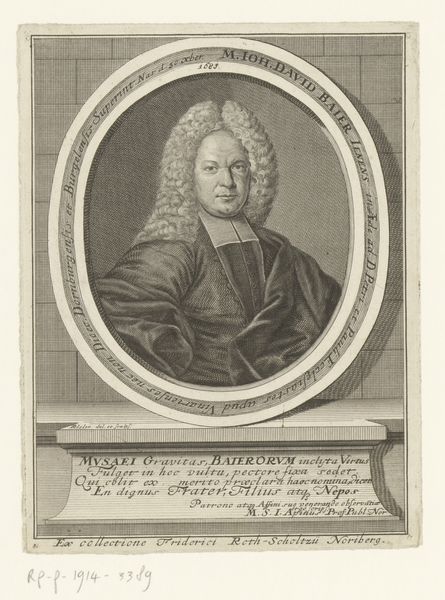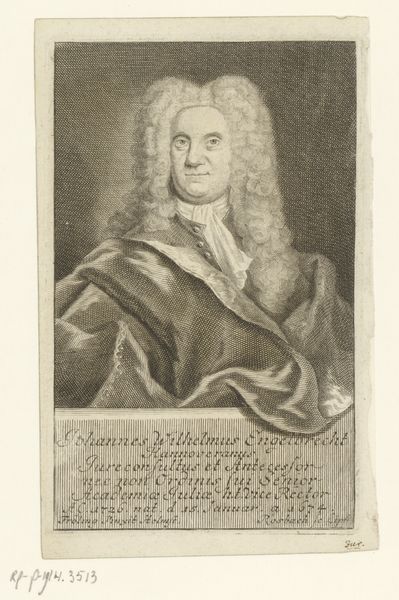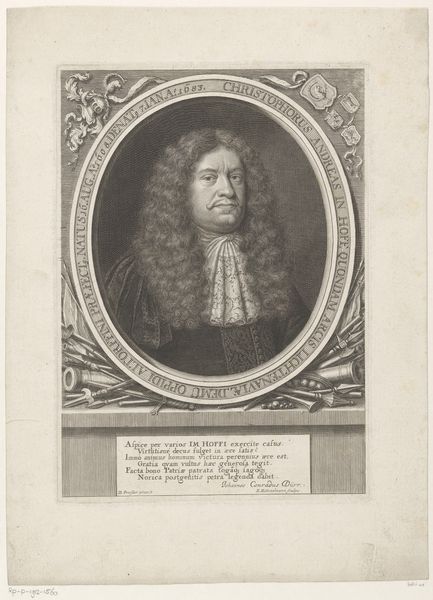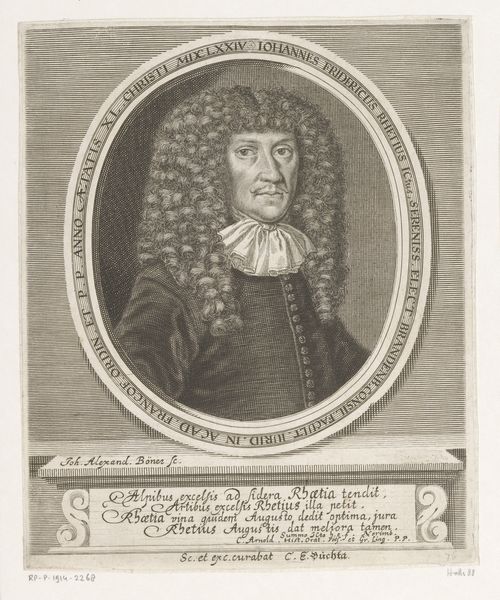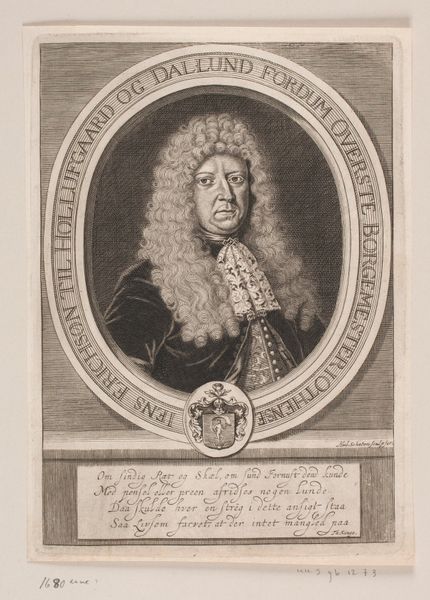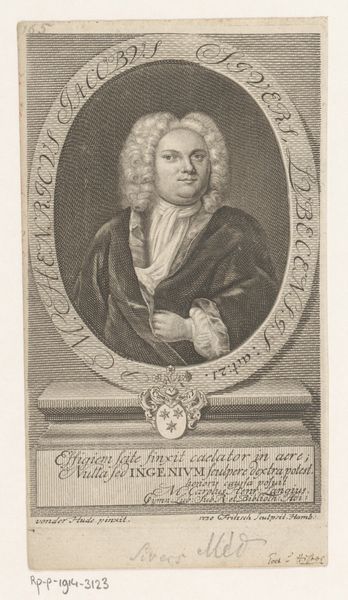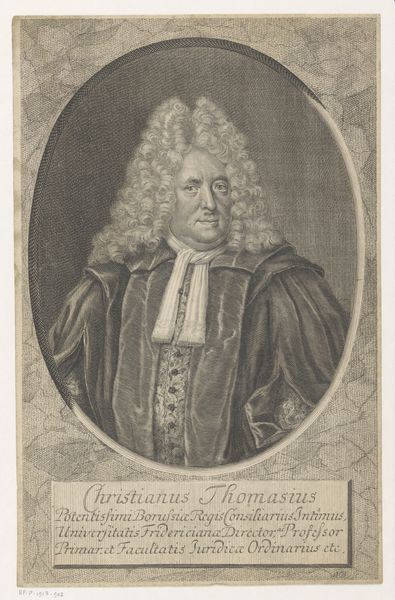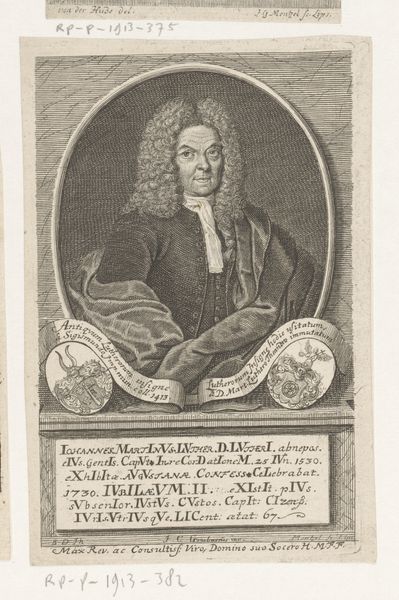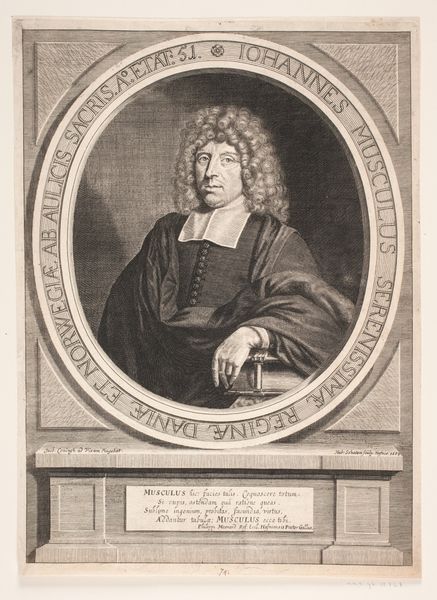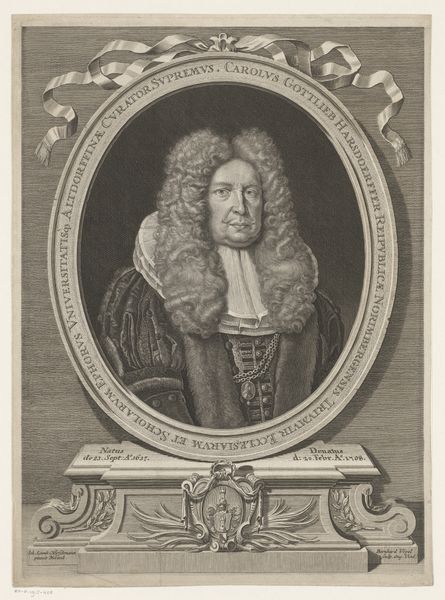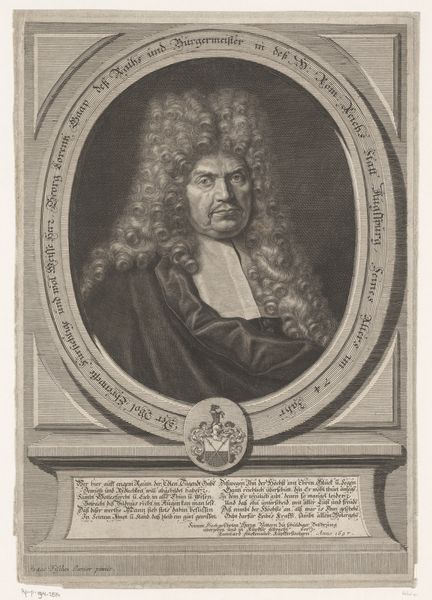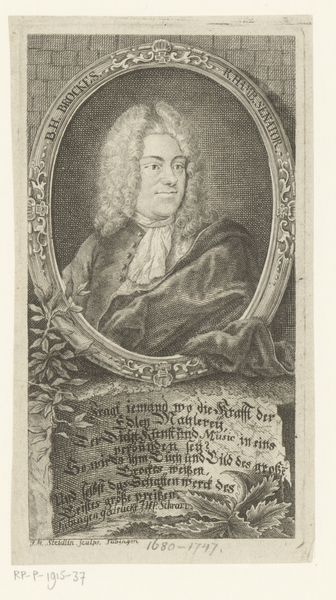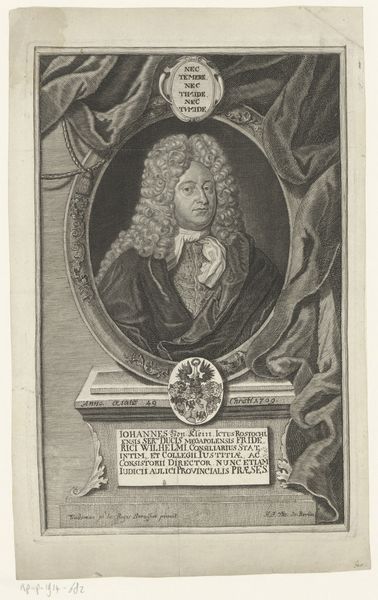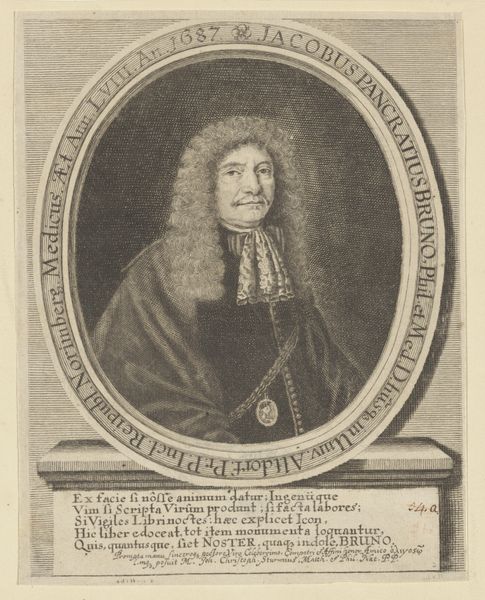
print, engraving
#
portrait
#
baroque
# print
#
engraving
Dimensions: height 270 mm, width 182 mm
Copyright: Rijks Museum: Open Domain
Editor: So, this is "Portret van Wolf Magnus Schweyer" made sometime between 1701 and 1742 by Georg Philipp Rugendas. It’s a print, an engraving to be precise, and it's currently held at the Rijksmuseum. It's… intense. The sitter's gaze is very direct. How do you interpret this work? Curator: That intensity comes, in part, from the conscious manipulation of symbols so common in Baroque portraiture. Look closely at the circular frame, and then consider how this shape itself mirrors halos frequently seen in religious iconography, associating the sitter with qualities like virtue or wisdom. And what about the text, the epitaph? What effect does it have, combined with the stern face? Editor: It makes him seem…important, obviously, but also like a monument to himself. Almost like he's trying to control how he’s remembered. Curator: Exactly! These memorial prints were often commissioned by family after death to perpetuate a specific image. Notice the coat of arms, carefully placed and rendered, embedding him further within a tradition and history, claiming both lineage and status. Consider how prints like this were consumed, how this imagery reinforces certain social structures. Do you think that message still holds power for viewers today? Editor: I think it does, but perhaps in a different way. We’re much more aware of the constructed nature of these images. Now I’m wondering about what it leaves *out*. What aspects of his life weren’t deemed worthy to record or symbolize. Curator: An excellent point. The act of selecting specific symbols always comes at the expense of others, shaping cultural memory in complex ways. Editor: I've learned so much! Thank you. Now I see how loaded with symbolism and intentional meaning these portraits can be!
Comments
No comments
Be the first to comment and join the conversation on the ultimate creative platform.
